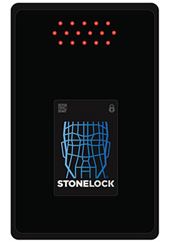ONVIF Profile T for advanced streaming employs a new media service that enables the support of High Efficiency Video Coding (HEVC), based on the international H.265 video compression standard that specifies how to decode data into displayable video. Profile T-conformant clients support both H.264 and H.265 video compression, while Profile T-conformant devices support at least one of these formats. The new Profile also encompasses Transport Layer Security (TLS) enabled communications and new functionalities such as bidirectional audio streaming, standardisation of events, imaging configuration, on screen display configuration, and more.
"Profile T broadens the scope of the ONVIF video profile to include both the H.264 video compression standard that is widely used in video surveillance solutions today and H.265 video compression, which is set to become the defacto video compression standard in the very near future," said Fredrik Svensson, ONVIF Profile T Working Group Chair. "In addition to support for multiple video compression types, Profile T establishes conformance regarding motion detection, metadata streaming, analytics and other important features that ultimately offer an expanded, standardized feature set to system integrators and end users, in addition to interoperability between manufacturers' solutions."
Profile T for advanced streaming supports transport over Websockets, which allows end users to stream video to a browser instead of a VMS client. Profile T also features bidirectional audio that is often used in city surveillance, transportation and parking security, and for other security applications that require two-way audio communication. Support for the TLS protocol adds another level of security to communications between Profile T-conformant clients and devices.
Standardisation of events such as motion detection and tampering is included in Profile T. Digital input and relay output events are covered, as is their configuration through the device I/O service, which can expedite installation. Profile T allows motion region detector configuration through the analytics service, which means a specific area of an image can be selected for analysis. Streaming of metadata, such as events and analytics data, is covered by Profile T as well.














